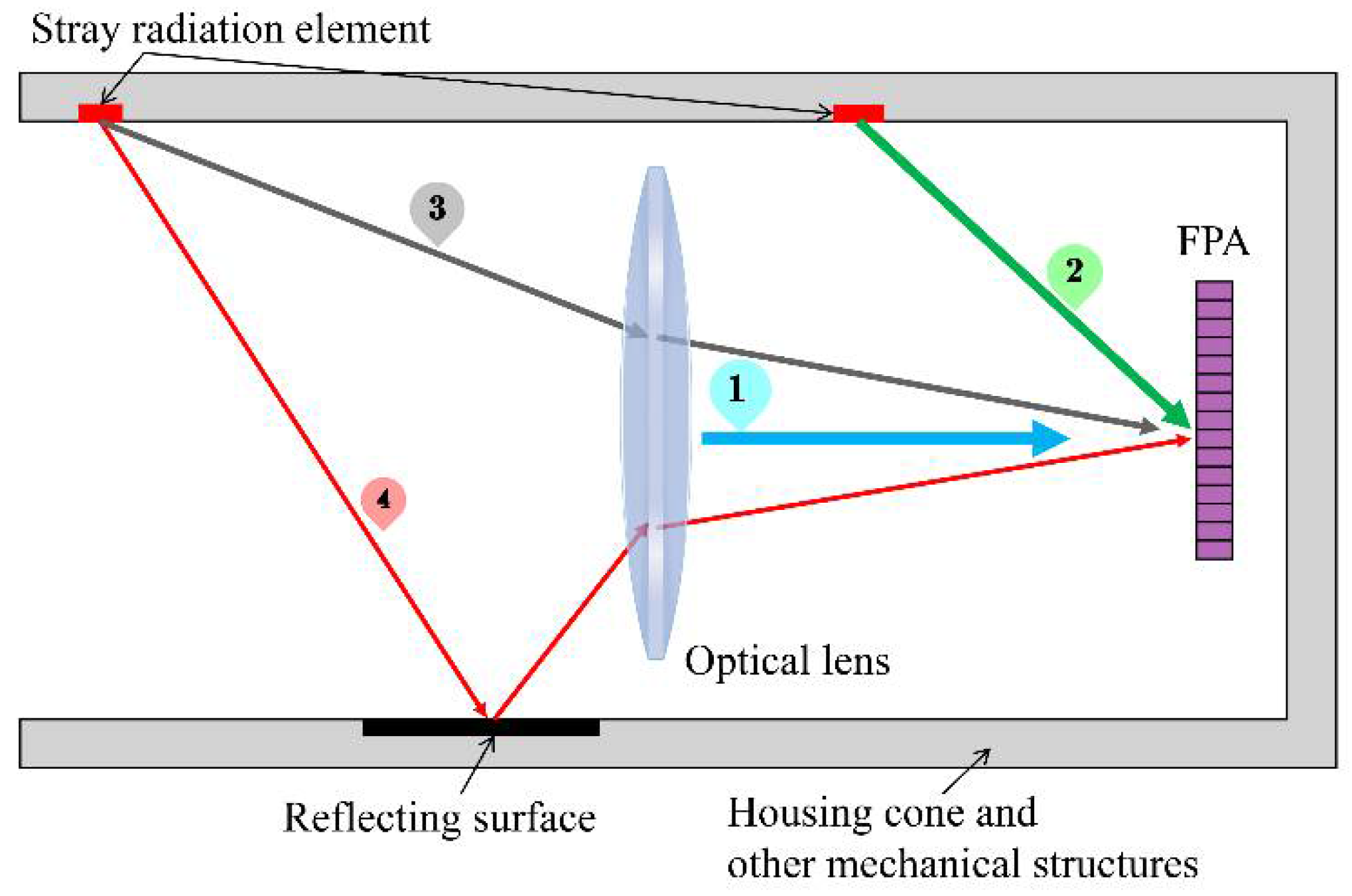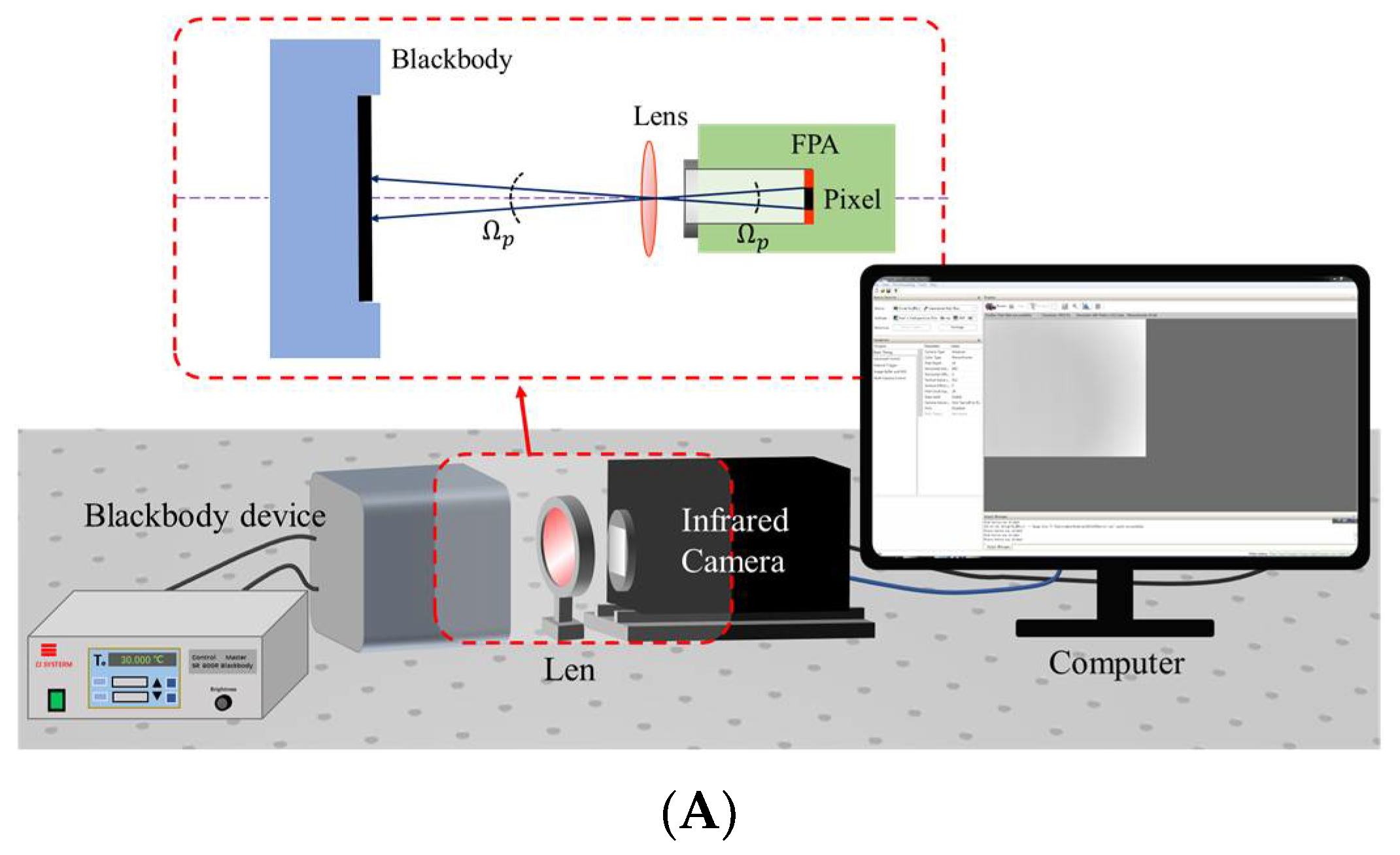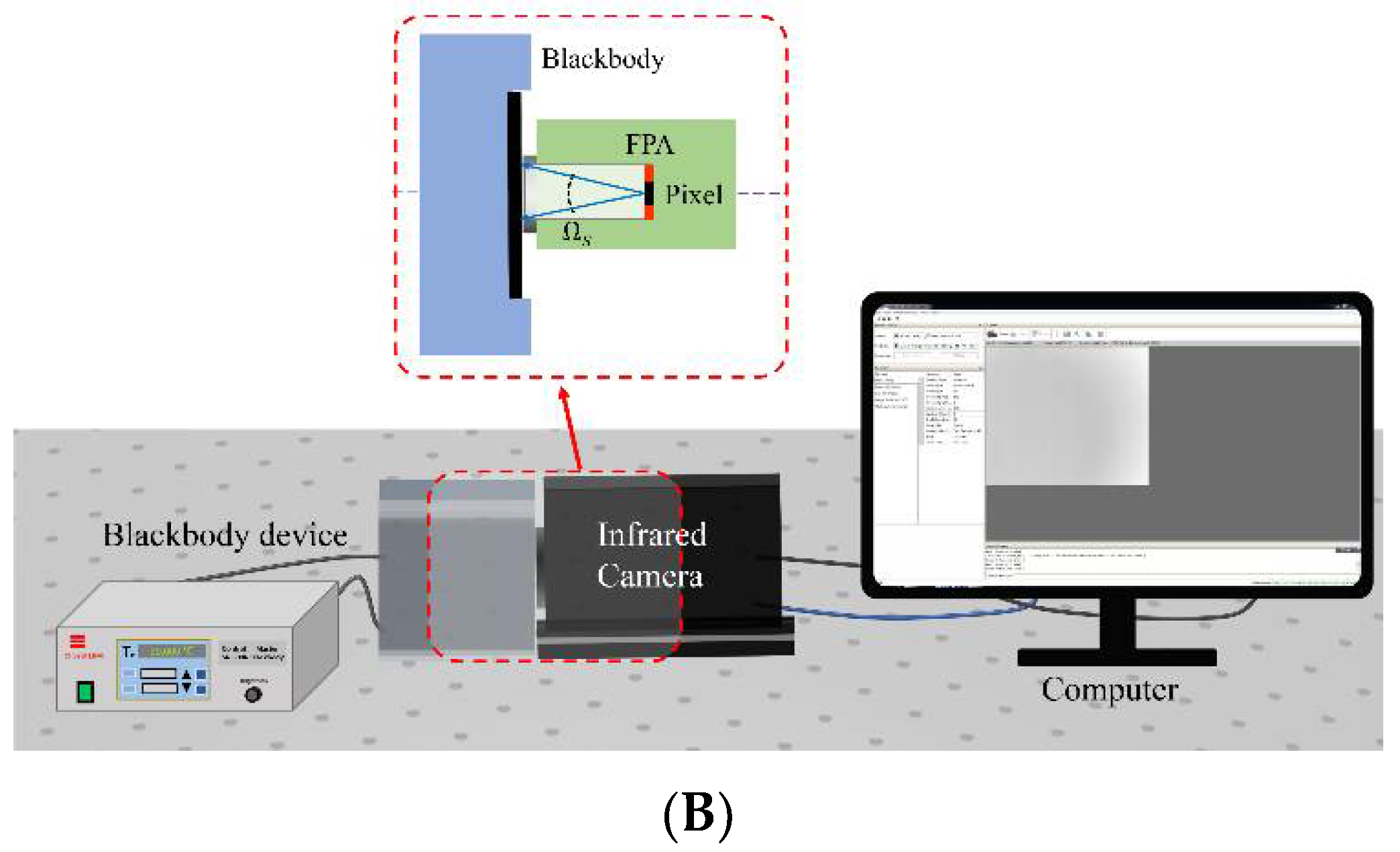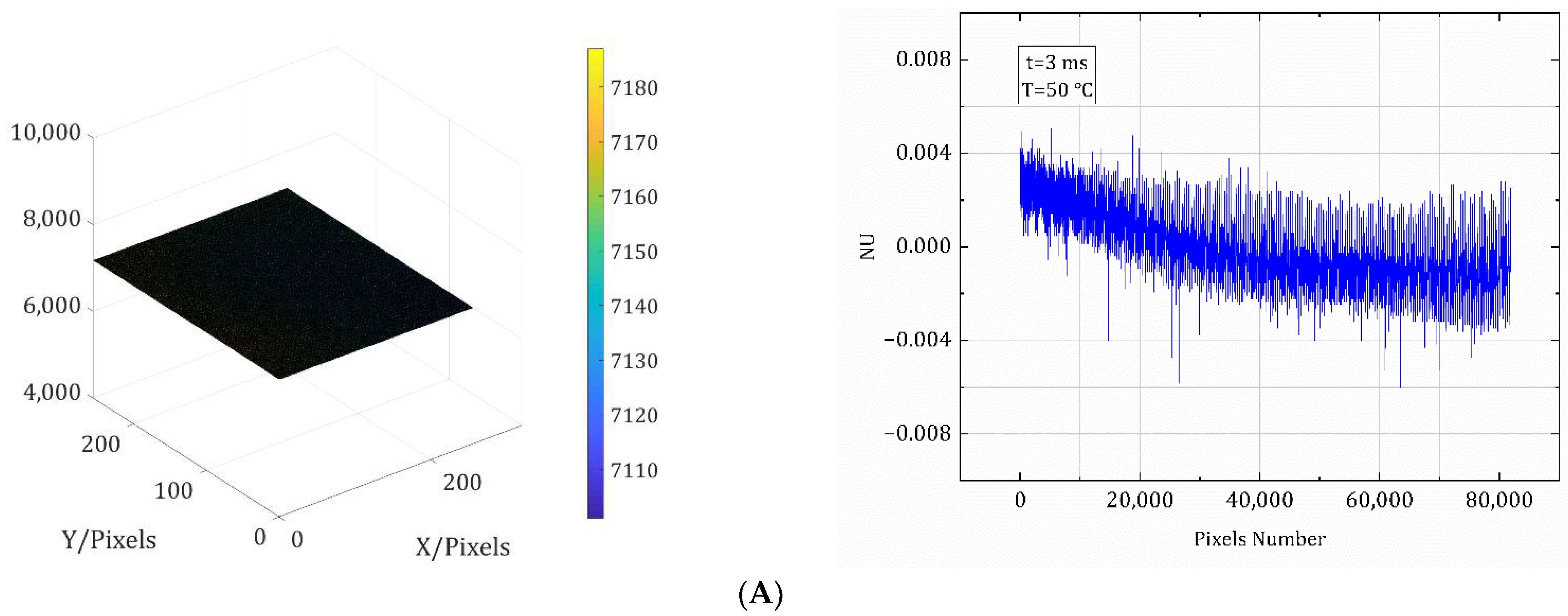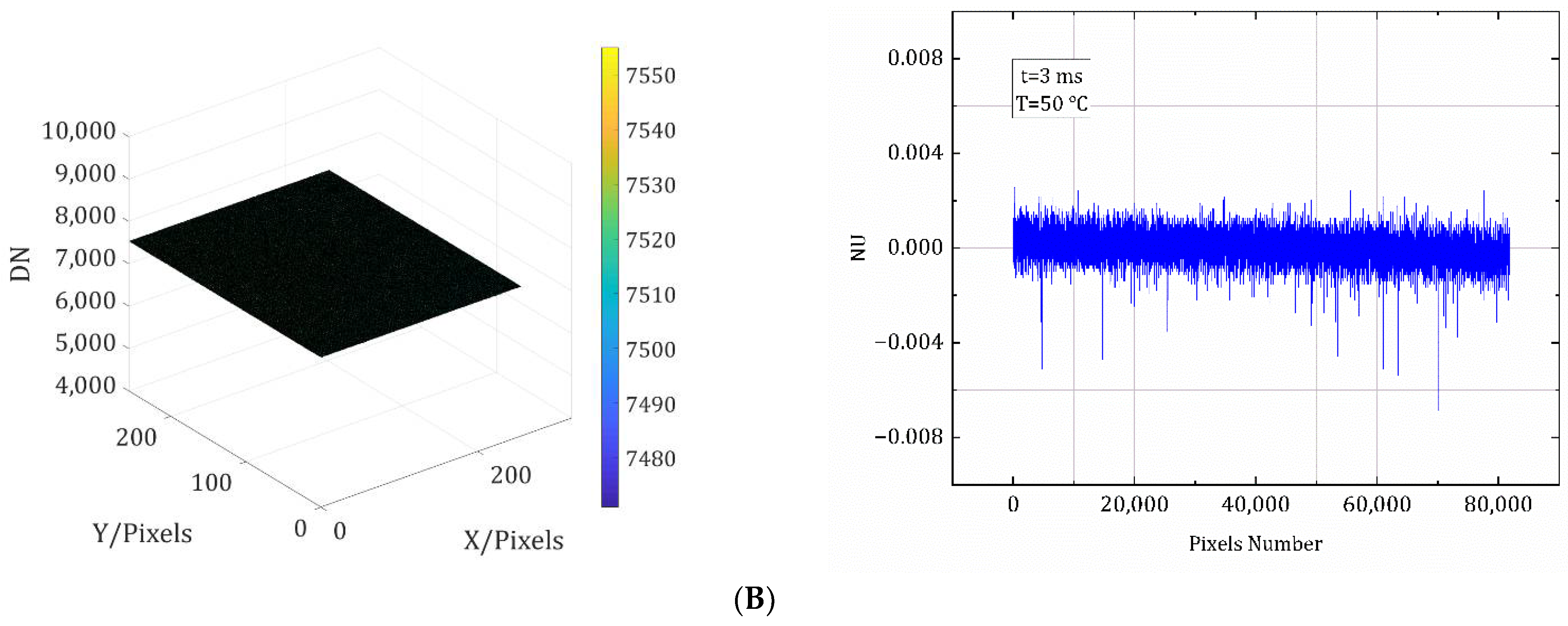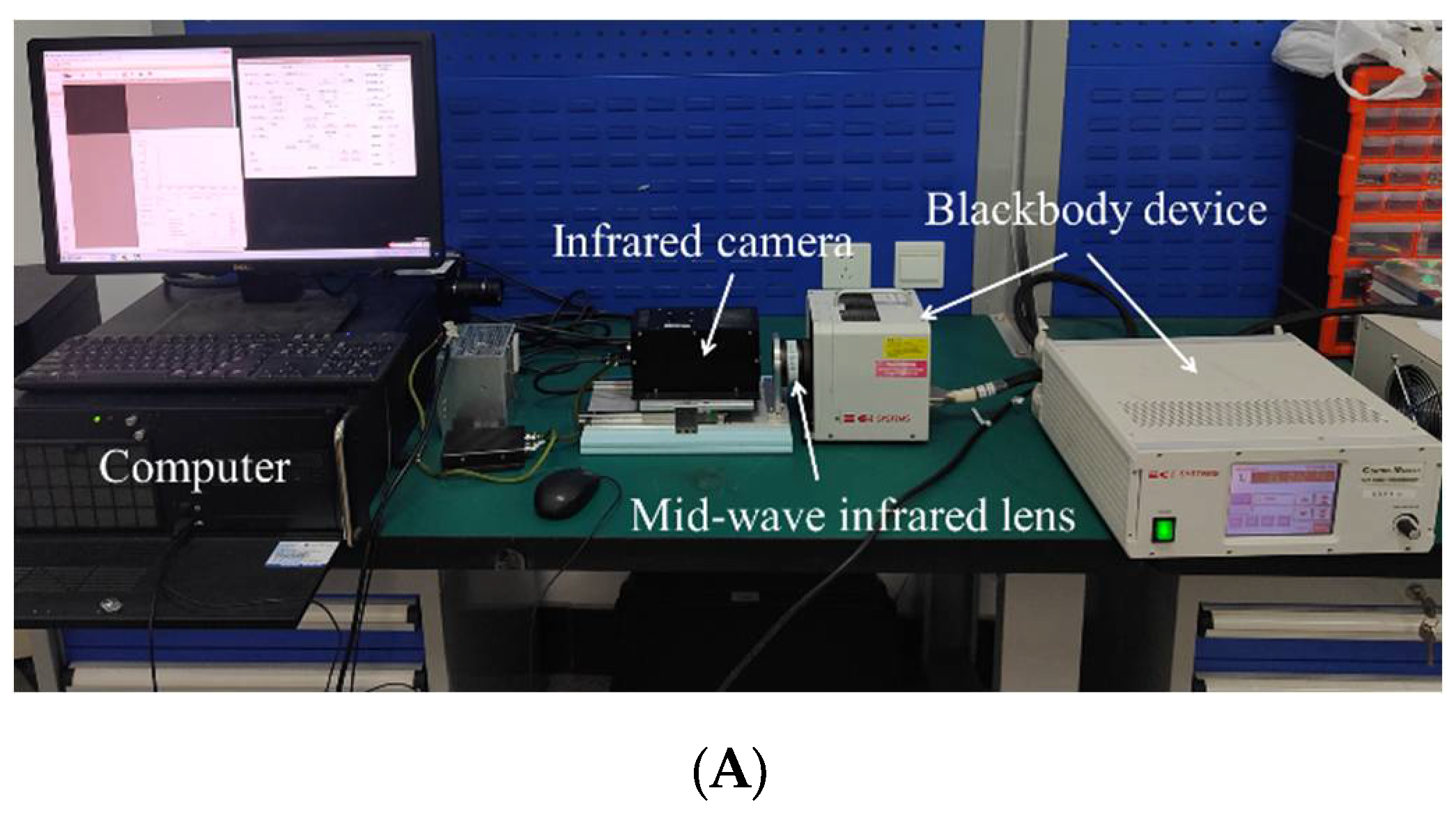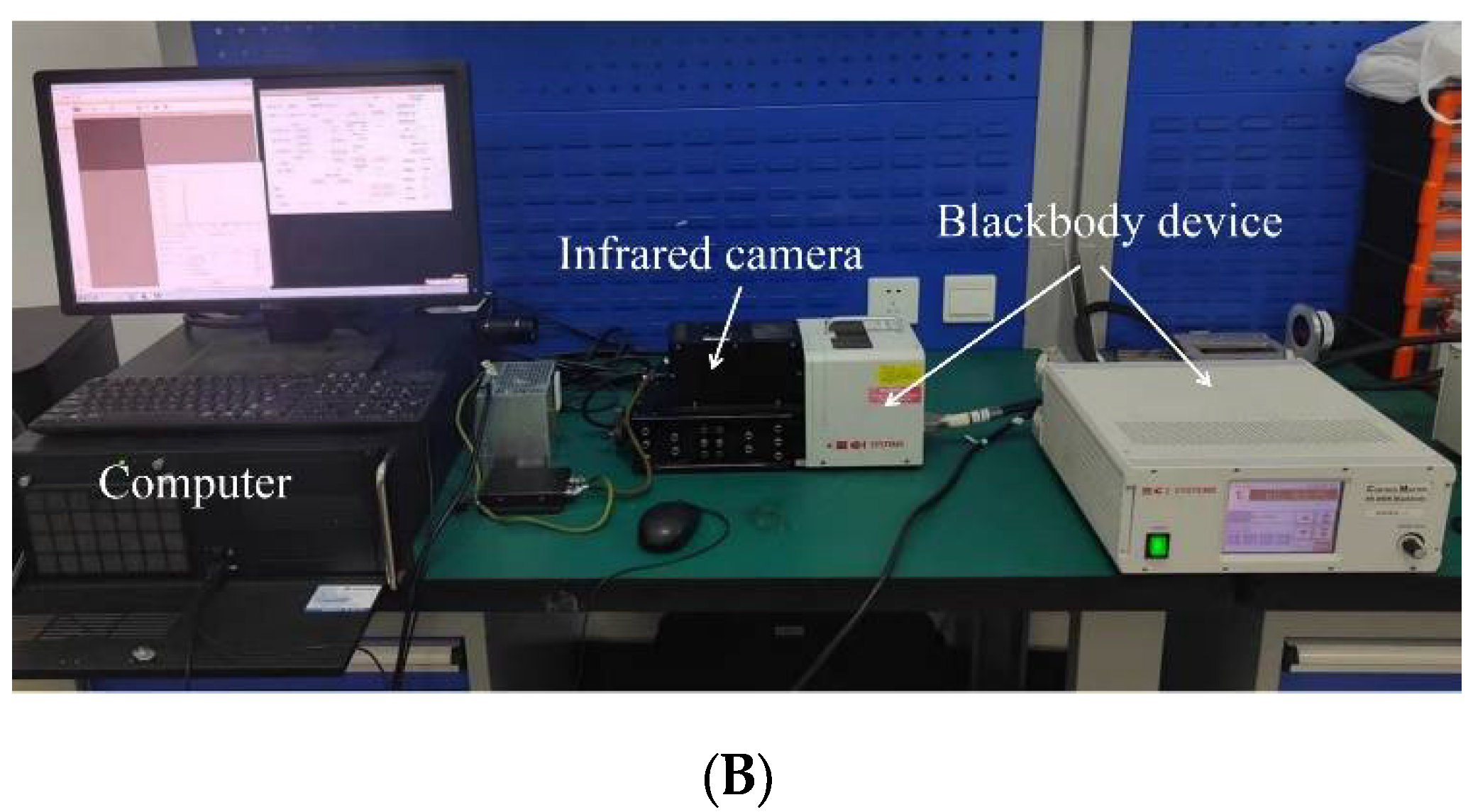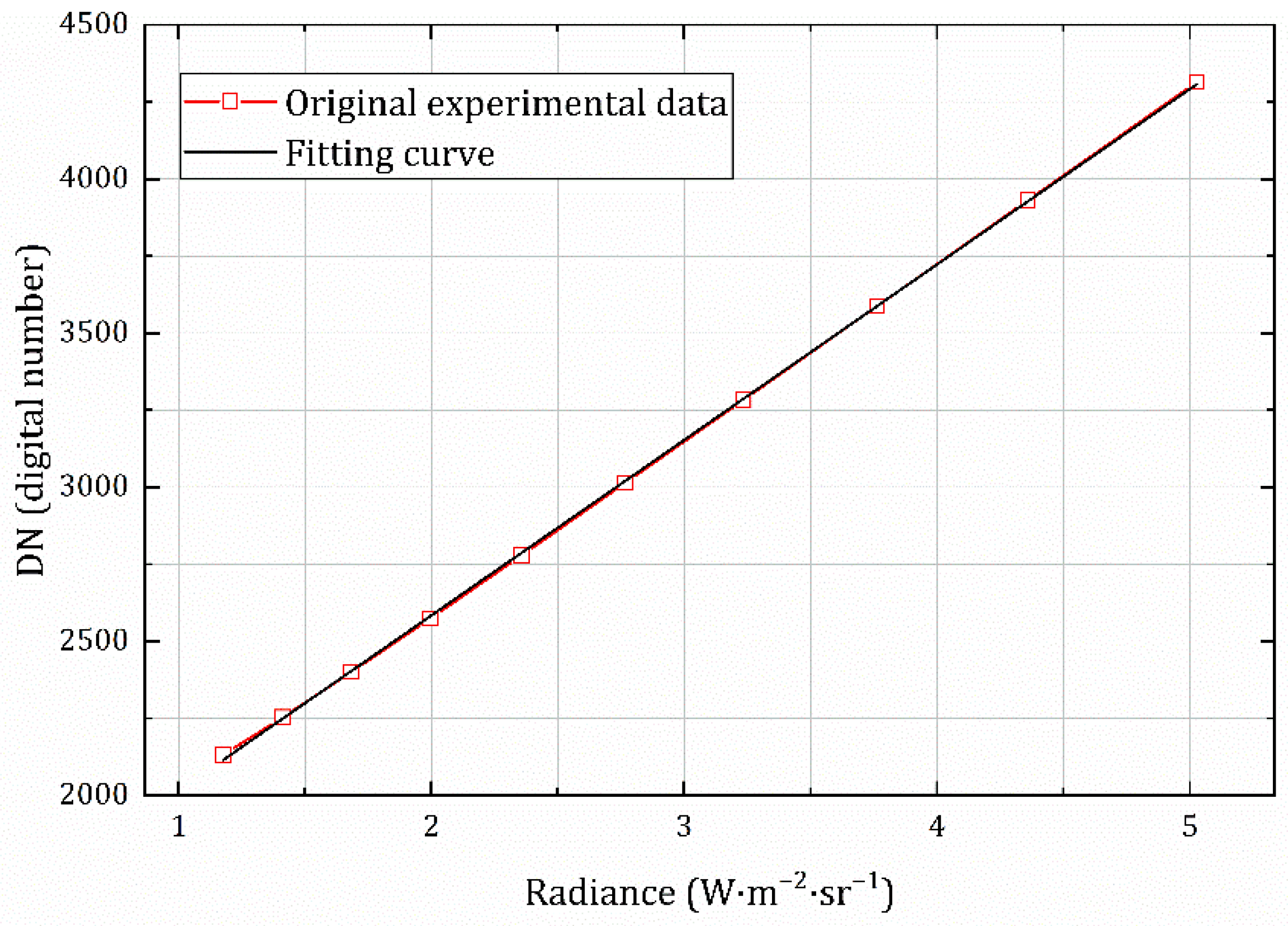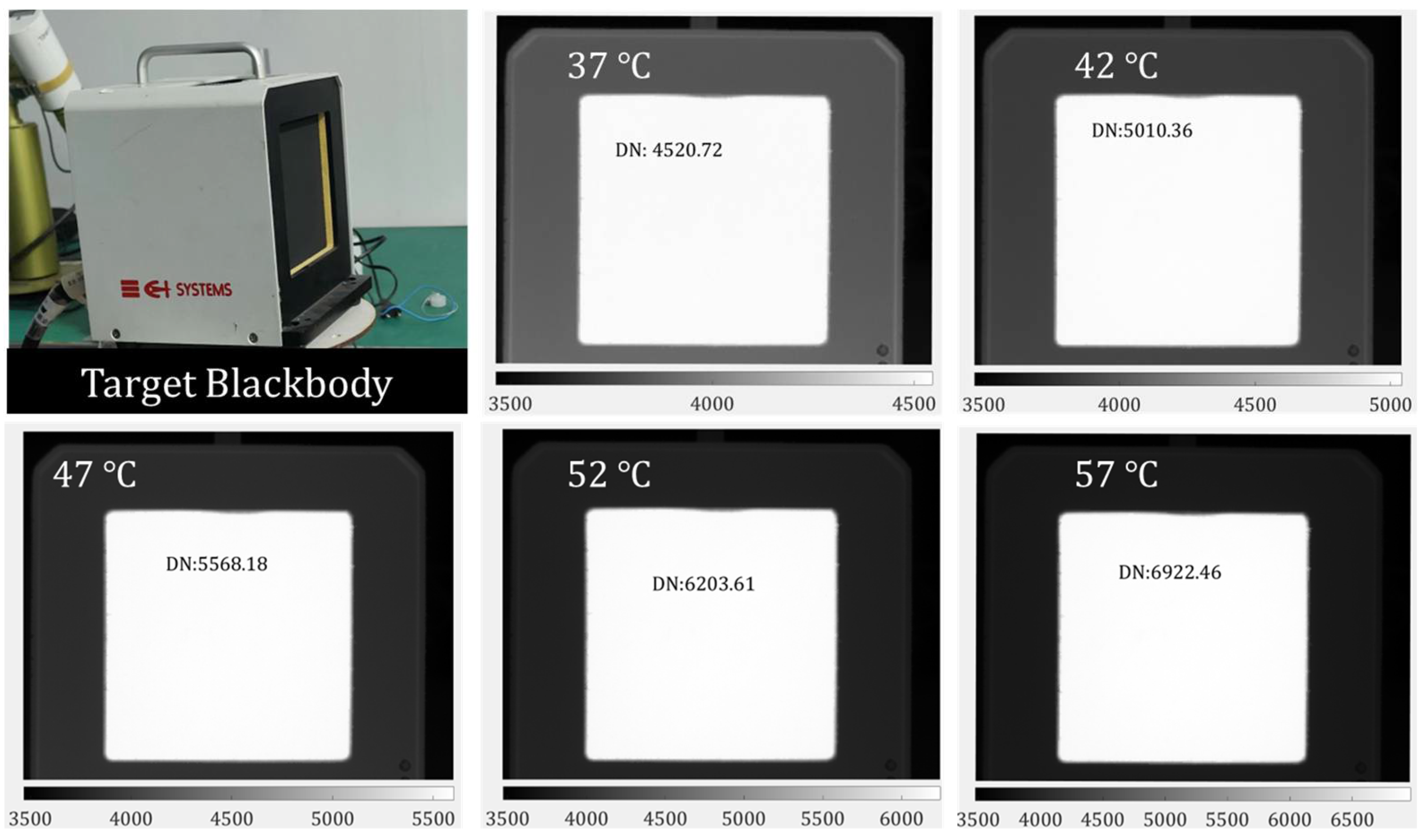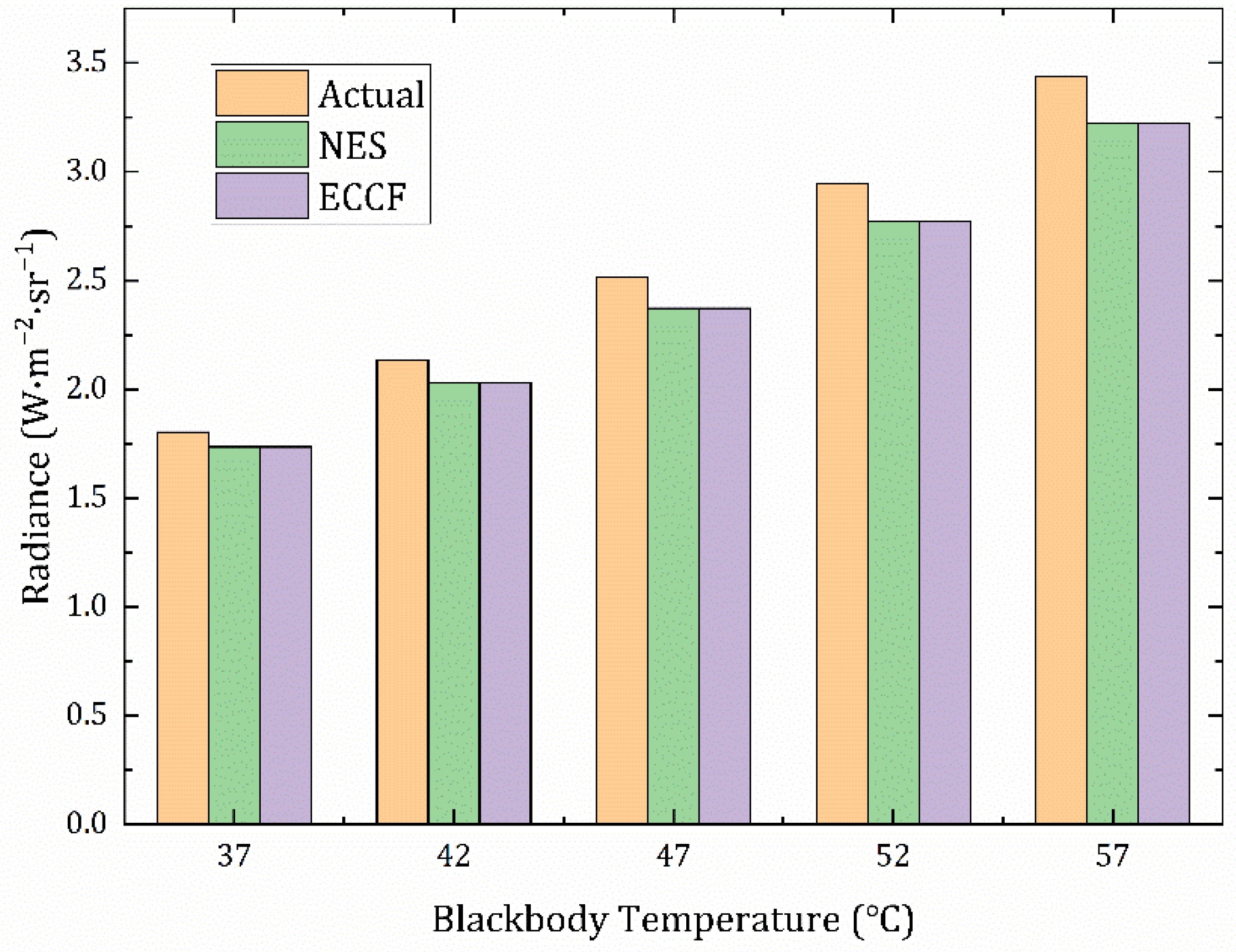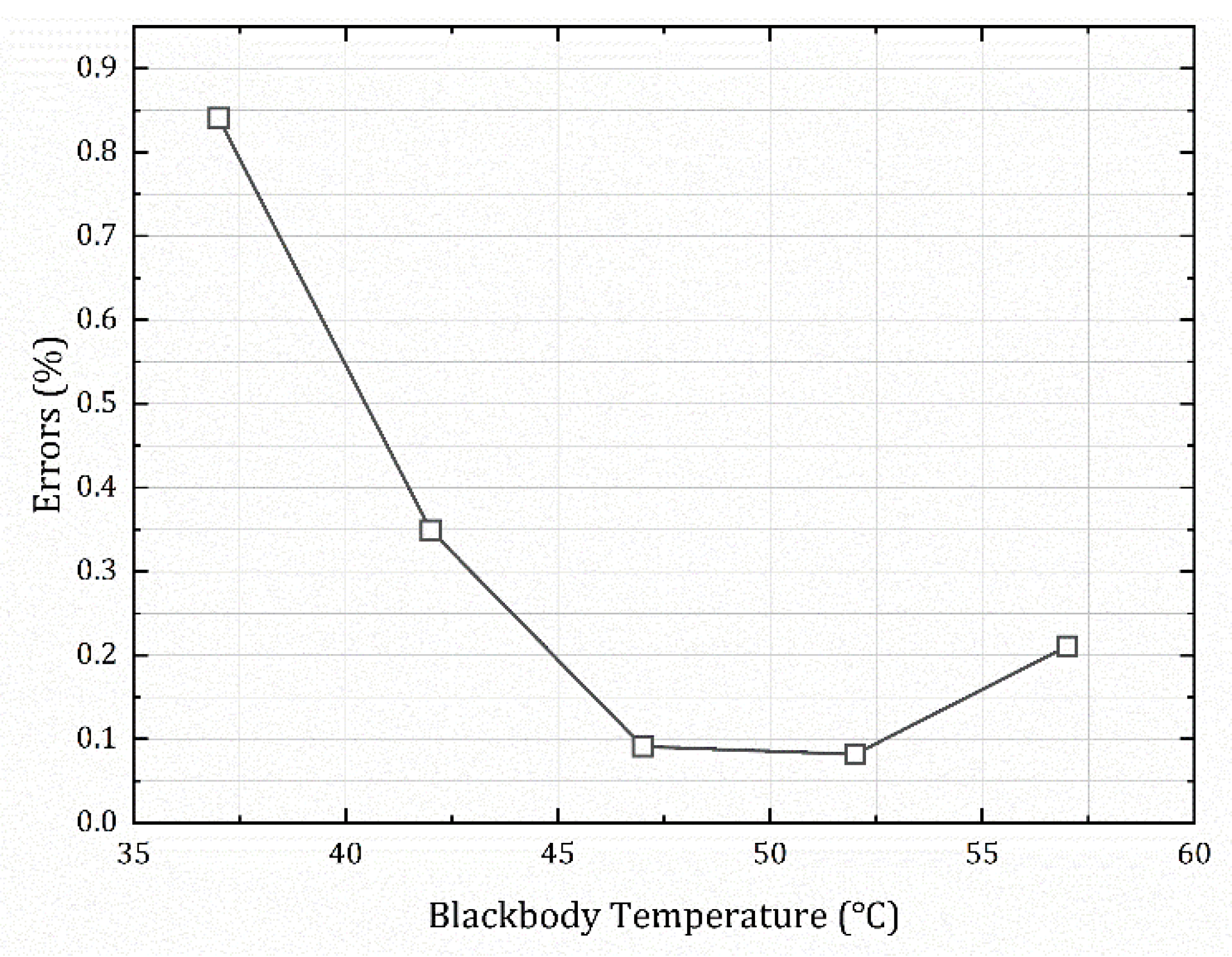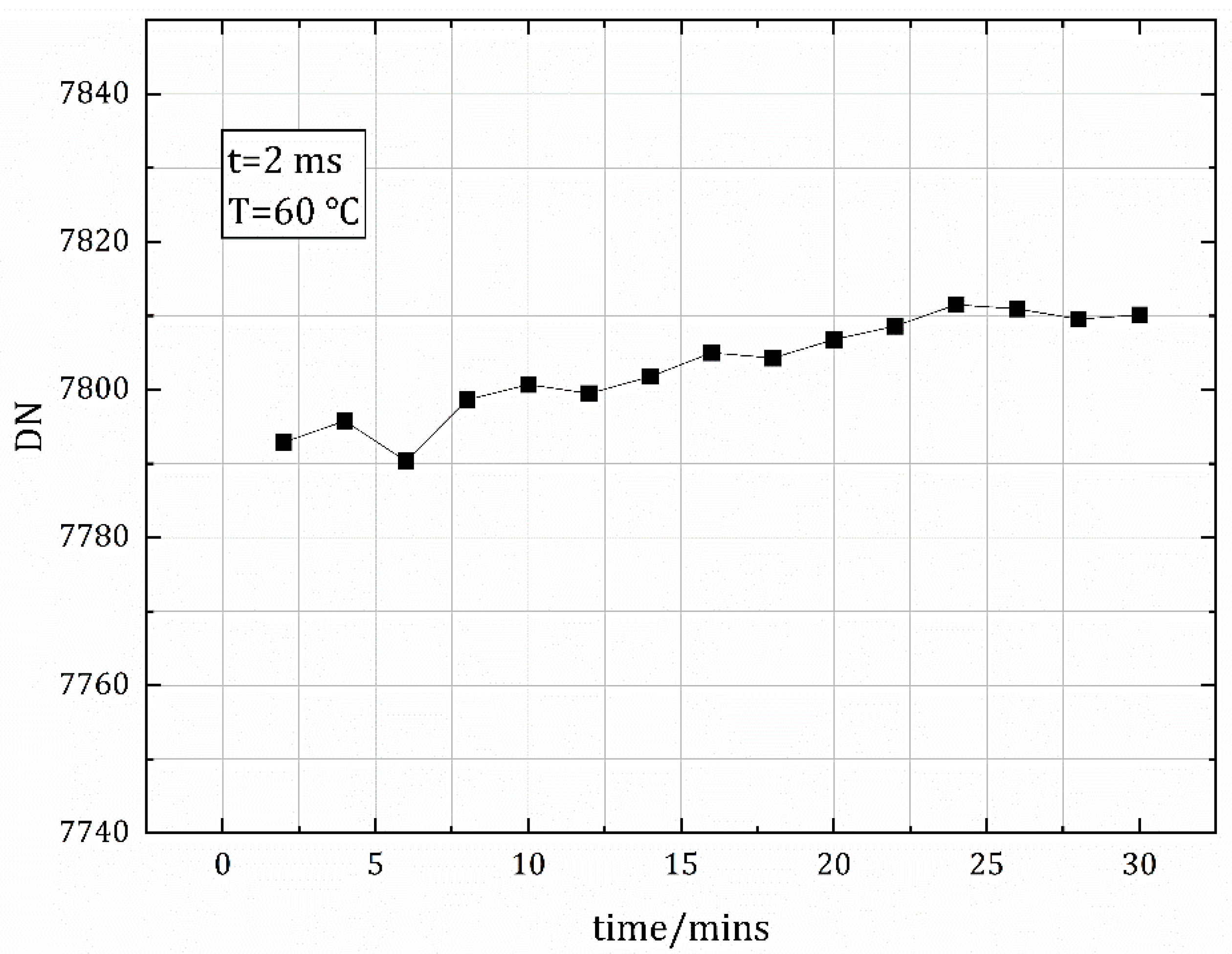3.1. Establishment of the Equivalent Calibration Conversion Function Model
At present, the system calibration of large aperture-infrared radiation characteristic measurement equipment relies on the large-area blackbody source matching its aperture, which brings higher costs and a greater workload to the calibration work, making it comparatively cumbersome to carry out. To solve the above problems, an equivalent calibration method for IR systems based on blackbody baffle is proposed. The method needs to fit the correspondence between the infrared image system calibration and the blackbody baffle calibration, and its working principle is shown in
Figure 4.
Figure 4A shows the schematic diagram of the calibration of the whole infrared system, while
Figure 4B shows the schematic diagram of the detector calibration based on blackbody baffle.
According to the derivation of the equations in
Section 2, the radiant power
received at the pixel of the whole infrared system calibration is as follows:
where
is the reflected radiant power of the background environment from the lens.
When using the blackbody baffle for direct calibration, the radiant power
received by the pixel is as follows:
Equation (11) describes the relevant physical quantities in
Figure 4A, where
is the radiance emitted by the external blackbody at temperature
;
is the area of the optical system pupil (mid-wave infrared lens);
is the projected solid angle of the pixel’s instantaneous field of view, determined by the pixel area
and the distance from the detector to the pupil of the system;
is the spectral transmittance of the infrared lens;
is the spectral transmittance of the atmosphere, which is approximately equal to 1 at a short distance and in the indoor environment;
is the radiance of the lens at ambient temperature
;
is the projected solid angle of the lens as seen from the pixel; and
represents the coefficients related to stray radiation.
In Equation (12), is the radiance emitted by the blackbody baffle as a function of its temperature , and is the projected solid angle when viewing the baffle from the pixel, determined by the size of the cold aperture of the infrared camera and the distance between the detector and the cold aperture.
In order to characterize the relationship between the two calibration methods, we define an equivalent calibration conversion function
, as follows:
where the emissivity of the lens is
and the reflectivity is
at ambient temperature
, and the radiance of the lens is equal to the radiance emitted by an ideal blackbody with emissivity of
:
In cooled infrared radiation measurement systems, the detector is in a low-temperature environment, and the value of is small enough, so we ignore the narcissus in this article for the sake of simplicity.
When the external blackbody is used as the baffle blackbody, and both have the same temperature setting, there is:
In summary, the equivalent calibration conversion function at a certain ambient temperature can be simplified as follows:
At a certain ambient temperature, there is only one variable in Equation (18) for a certain infrared radiation characteristic measurement system; that is, is a function of the blackbody temperature.
3.2. Measurement of the Equivalent Calibration Conversion Function
The output grayscale of the infrared camera is proportional to the radiant power received by the detector, so the relationship between the grayscale response
of the camera and
in both cases can be written as follows:
where
is the grayscale response of the optical system when observing the external blackbody,
is the grayscale response of the detector when directly observing the baffle blackbody, and
is the grayscale value generated by the internal offset of the detector—independent of the input radiant power. Through the equivalent calibration conversion function, the response of the baffle blackbody can be converted to the equivalent external blackbody response to complete the calibration conversion.
The specific measurement process of the function for the baffle blackbody’s temperature-dependent ratio
is as follows: A series of blackbody temperatures are set in the camera’s temperature measurement range with the same indoor environment. By alternately measuring a series of optical imaging system calibration images and baffle blackbody calibration images at the same temperature, the ratio of their gray values can be calculated, as follows:
Because there is almost no stray radiation in the calibration of the baffle blackbody, the internal offset of the detector can be calculated by the calibration fitting curve of the baffle blackbody.
After enough data are collected, the mathematical relationship between the equivalent calibration conversion function and the blackbody temperature can be determined by numerical fitting, and the gray response of the equivalent external blackbody at any temperature can be calculated using this relationship.


